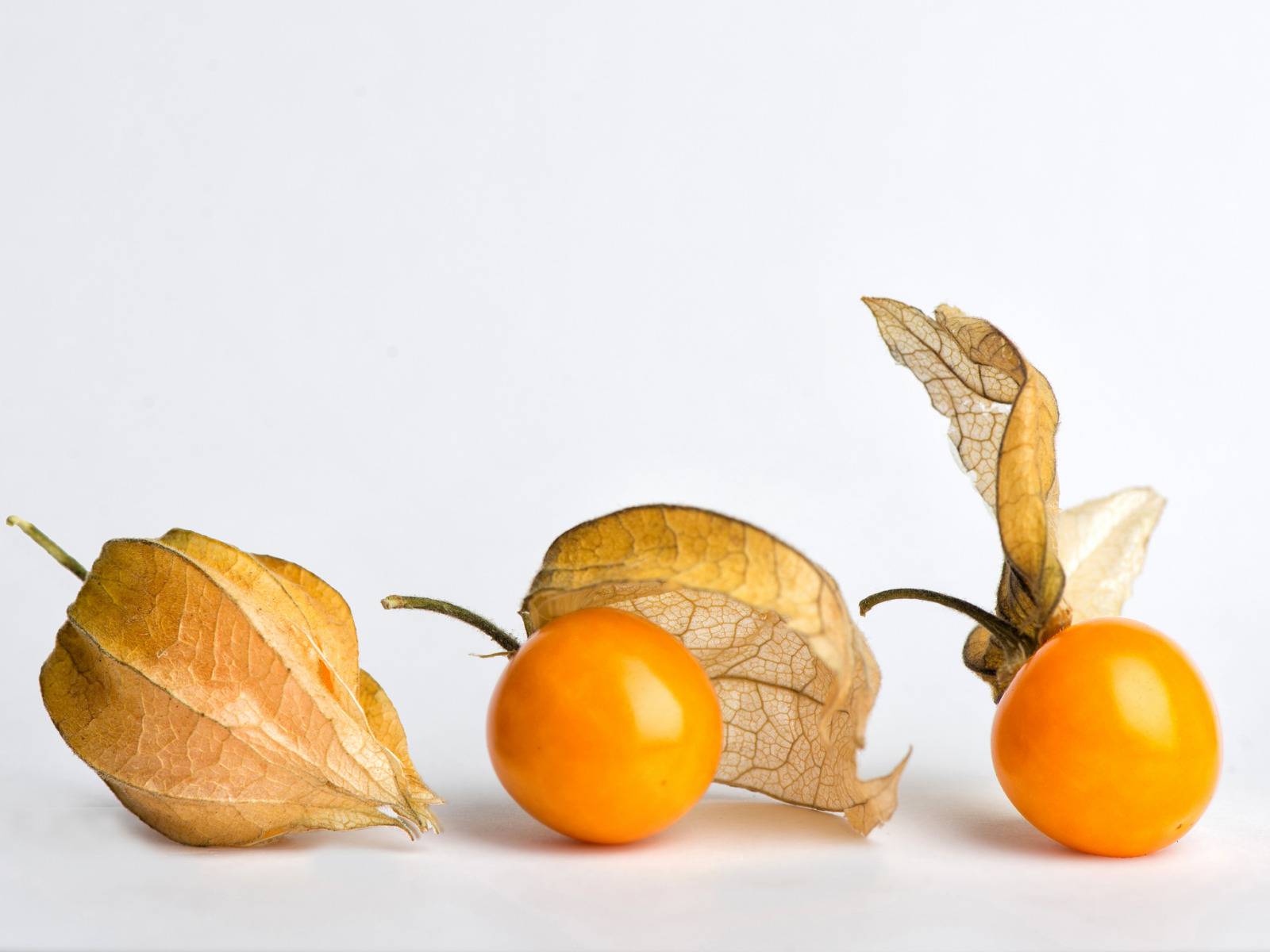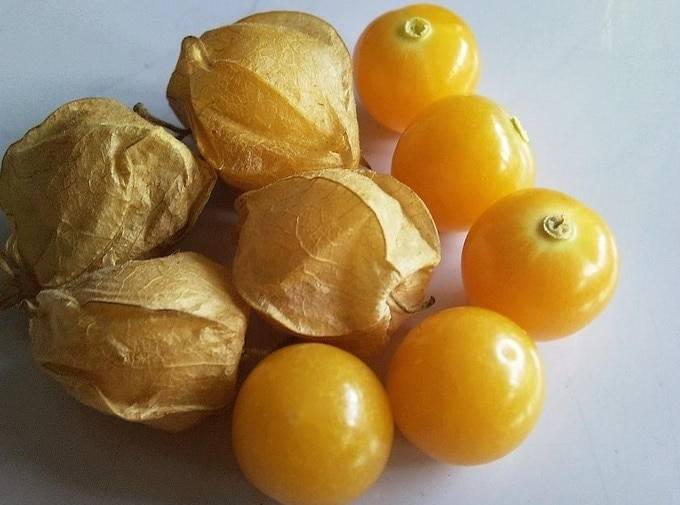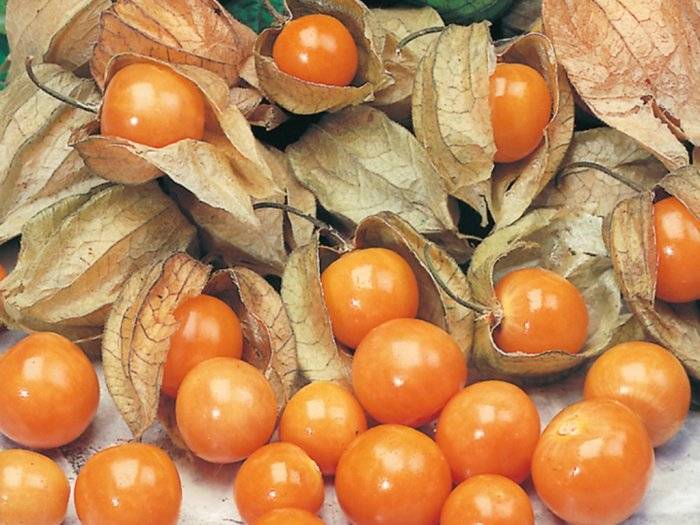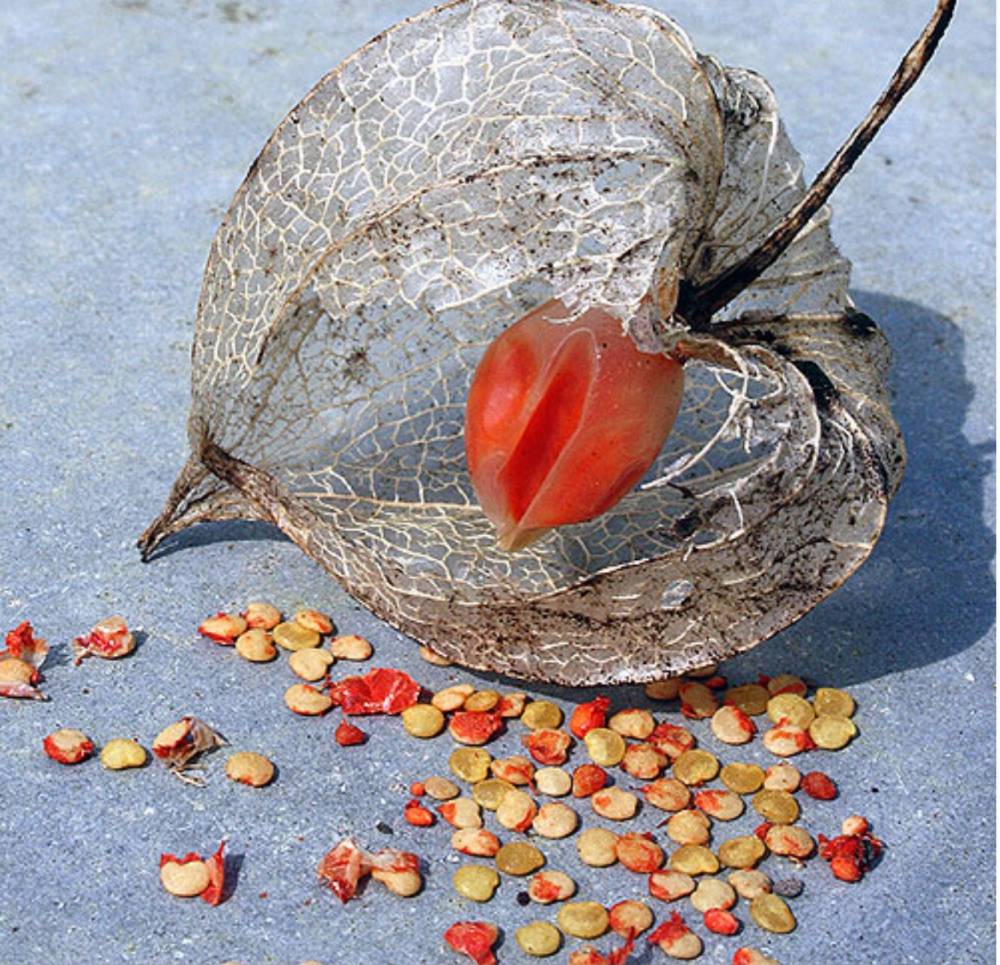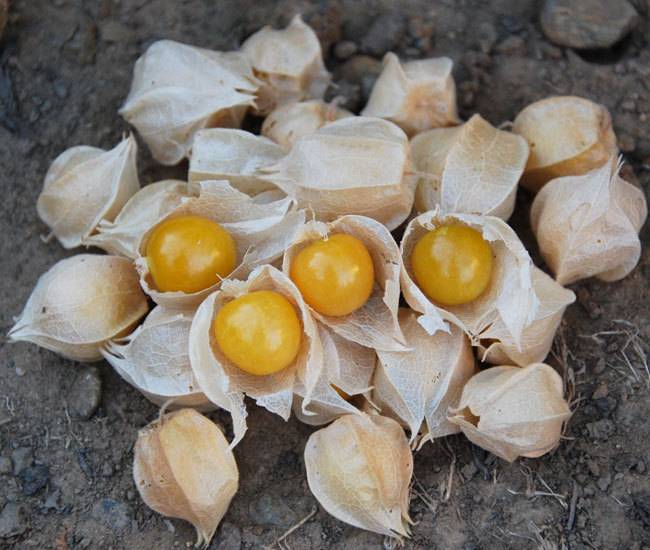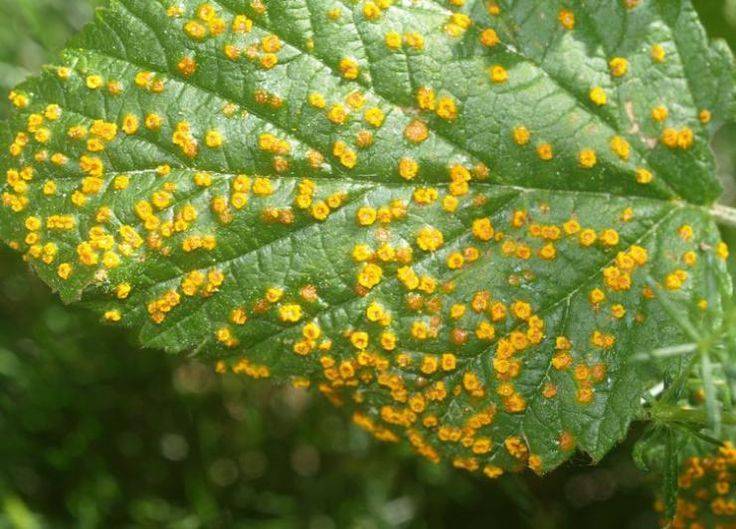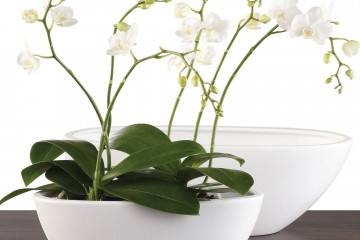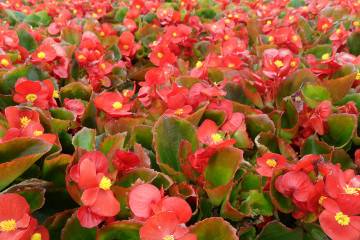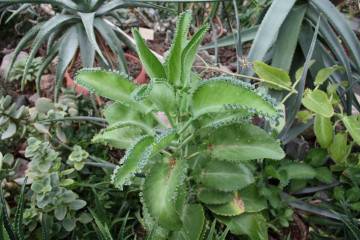Physalis vegetable and berry - what does it taste like
Content:
Physalis vegetable is often called the Mexican tomato. This culture is not very popular in Russia, and this is unreasonable. The fruits of the plant are incredibly healthy and tasty. It can be eaten raw, used for various marinades, preparations, jam or candied fruits can be made from it.
How to grow vegetable physalis
Unlike many vegetable crops, growing physalis vegetable is not too difficult. Growing it is no more difficult than other members of the Solanaceae family, such as tomatoes or eggplants.
Description of edible physalis
All edible physalis is usually divided into two large categories: vegetable and berry. They can be distinguished from each other not only by their taste, but also by their appearance. Description of the vegetable type:
- most often frost-resistant annual;
- stems are erect, high, up to 90 cm;
- leaves are oval, pointed at the edges;
- flowers are simple, white, five-petal, until they have fully opened, resemble bells;
- the fruits are quite large, the weight depends on the variety: the minimum is 40 g, the maximum is 150 g;
- 1 bush can form up to 200 fruits per season;
- the taste of the fruit is sweet and sour.
Description of the berry species:
- fruits of berry physalis are small (10-15 g);
- the ripening period is longer;
- the shape of the leaves and stems is similar to the vegetable variety;
- the fruit is also surrounded by a box, which protects the berry from the cold;
- the fruits are fragrant, tasty, they can be consumed fresh;
- the yield is low.
What does physalis taste like?
Everyone who has never tried breeding this culture thinks about what physalis tastes like. Fresh vegetable varieties do not differ in pleasant taste, they are rather sour. But on its basis, you can cook many delicious, original blanks. The taste and aroma of berry physalis are more pronounced and depend on the variety. It can be strawberry, orange sweet and sour taste.
Varieties of vegetable physalis
Homemade preparations from vegetable physalis turn out to be rather unusual, since the plant has jelly properties. This property is not inherent in other vegetables, so such canned food turns out to be especially interesting. There are quite a few recipes. Among the varieties of vegetable species are:
- Kinglet;
- mushroom soil;
- early Moscow;
- Confectioner.
But the most popular variety is Lakomka.
Physalis Gourmand
This variety is officially included in the State Register of the Russian Federation and is recommended for growing outdoors. It is early ripe, unpretentious, always gives a good harvest. Ripening of fruits is simultaneous, occurs 90-95 days after the appearance of the first shoots. Erect stems about 80 cm high. Fruits are average 60-70 g, have good transportability. They are rich in pectins, vitamin C and sugar. The fruit sets beautifully in any weather.
Physalis berry: varieties
The main varieties of berry physalis:
- Florida;
- pineapple;
- Peruvian
- jam;
- strawberry;
- raisin;
- Philanthropist;
- Gold placer.
The most popular of these is the perennial strawberry variety. It is considered the basis for the creation of numerous hybrid varieties.
Physalis: planting and care in the open field
Planting and caring for physalis in the open field is quite simple. Even a person who first decides to work in his own garden can grow it. Most often it is grown through seedlings, but in the southern regions it is possible to plant seeds immediately in open ground. In addition, unlike the inedible decorative perennial physalis, planting of vegetable and berry species should be carried out annually. And growing physalis in your country house, like most plants of the Solanaceae family, is quite simple.
Planting vegetable physalis seeds in open ground
Directly in open ground, seeds are planted only in the south of the country, more often physalis is grown from seedlings. It is possible to grow them in a greenhouse, for example, from polycarbonate.
First of all, the planting material is calibrated. The seeds are placed in a 5% saline solution. It is mixed, and only those seeds that are least viable remain on the surface. They should not be taken for planting, since the probability of germination is quite low. But the seeds at the bottom will surely germinate and produce high-yielding plants.
The material remaining after sampling must be rinsed with running water and dried. Immediately before planting, they should be soaked in a solution of potassium permanganate for about 30 minutes. To speed up the germination process, you can use the following additional seed treatment methods:
- soak the planting material for a day in a solution of ash and water (1 teaspoon per 100 ml);
- soaking for 18 hours in a solution of epin (you can choose any other growth stimulant). Concentration: 2 drops per 100 ml;
- for 12 hours, soak the seeds in potassium humate (25 drops per 100 ml).
Site selection and preparation for sowing
The site for planting should be chosen based on the plants that grew on it before. It is strongly discouraged to grow physalis in a place where other nightshade crops grew before it: tomatoes, eggplants, peppers, etc. But he loves the soil where other vegetables, for example, cucumbers or cabbage, grew.
It is worth doing the preparation of the garden about 2 weeks before the time of the proposed planting, and better still in the fall. The soil must be dug well, mixed with humus or peat and lightly sprinkled with ash. In no case should you use manure as fertilizer. It is in such a substrate that the prepared planting material will be sown as soon as the temperature of the soil and air warms up to at least 10 ° C.
Step-by-step planting process
The process of planting seeds in open ground is practically no different from sowing other plants. Most of all similarities with relatives - tomatoes and peppers. The procedure is as follows:
- At a distance of 50 cm from each other, grooves are made with a depth of 10 cm.
- A little humus is laid in them, after which they are abundantly watered.
- Seeds are laid out carefully at a distance of at least 15 cm from each other.
- Furrows are covered with turf soil.
After the seeds have sprouted, thinning is carried out. They leave the strongest and most viable sprouts. It is advisable to do this so that the distance between the remaining seedlings is at least 25 cm. Those bushes that had to be removed should not be thrown away, they can simply be transplanted to any other garden bed.
Some gardeners sow seeds before winter in late autumn. If this experiment is successful, the plants acquire the most powerful immunity, they are not afraid of any diseases.
Planting vegetable physalis
In a normal climate, plant care is quite simple. This is the most unpretentious species among all the cultivated representatives of its family. Even a beginner can understand how and what to do to get an excellent harvest. Therefore, do not be afraid that physalis, growing and caring for this, as yet, rare crop, will turn out to be too difficult.
Do I need to pinch the physalis
Gardeners, especially those who are used to growing tomatoes, are wondering whether it is necessary to pinch the physalis. This procedure is not required as the fruits of the plant grow in the axils of the branches. Therefore, the more of them on the bush, the higher the yield.
Watering mode
First of all, watering is necessary when planting seeds or seedlings in open ground, and then as needed. The soil should not dry out, but you should not be guided by its top layer either. It does not have to be always moisturized. Watering will be sufficient in hot, dry weather. To water, get rid of weeds, loosen the bush, as rarely as possible, it is worth mulching the soil around with any natural material.
Fertilizers for vegetable physalis
Throughout the growing season, the plant needs feeding. It is especially important to apply fertilizer at the very beginning and during fruit setting. Physalis loves organics. Therefore, it is recommended to feed it with a solution of chicken manure and ash (1:15) or rotted mullein (1:10). You should be especially careful when preparing a solution of chicken manure, since this is a very rich fertilizer. If you take more of it than you need, you can completely burn the plant's root system.
Harvesting
The first to ripen are the fruits hanging on the lower branches. Care should be taken to prevent their prolonged contact with the ground, as they can rot. Even if they are not fully ripe, they will be stored for a long time at home. You can immediately cook something from them, or you can wait for the entire crop to ripen. The ripening rate depends on the variety. Fruit color and size are also varietal characteristics.
Physalis in the Urals: features of cultivation
Growing physalis in the Urals is as easy as in other regions. But do not sow it directly into open ground, the method of germinating seedlings is preferable. It is also worth keeping an eye on the shelter of the seedling beds in the event of the return of spring frosts.
Planting and caring for physalis in a greenhouse
Since this plant is very unpretentious, an abundance of heat and light is enough for it to develop fully. In the greenhouse, it also needs to be periodically loosened, rid of weeds and watered once a week. It is much easier to care for a vegetable variety in a greenhouse than for a berry one. She still needs a lot of fresh air, so even constant ventilation may not be a panacea and will not be able to ensure a good harvest.
How to form physalis in a greenhouse
Physalis can be formed in a greenhouse in the same way as when growing in an open field. There are several nuances. It is necessary to put trellises in front of him, to which the plant will be tied, and also tie the ropes from above, along which he can put his stems. These measures are necessary because physalis in a greenhouse can grow a lot.
Physalis diseases
This plant initially has a strong immunity. It is much stronger than tomatoes, peppers, eggplants. However, physalis is also affected by diseases.
Physalis diseases in the greenhouse
The main diseases of physalis in a greenhouse:
- white / gray rot affecting all parts of the plant;
- watery rot that destroys fruits;
- late blight manifests itself in the same way as on tomatoes - it affects all parts of the plant, cannot be treated;
- fusarium leads to wilting of the entire bush;
- penicillosis appears when the plant is damaged.
The causative agents of diseases come from the soil, from neighboring plants, from seeds.
Physalis: leaf diseases
It often happens that the leaves may turn yellow ahead of time, become covered with various spots, and begin to fade. Most often these are signs of diseases of physalis leaves. Basic:
- Alternaria can be recognized by the appearance of brown spots;
- mosaic that affects both leaves and fruits.
These are the most common diseases, but there are others.
Yellow bumps on physalis leaves
If yellow pimples appear on the leaves of physalis, they turn yellow and fall off, this is most likely a manifestation of rust. It happens infrequently, but it is still possible as an option.
Recommendations and tips for protecting physalis from diseases and pests
Any disease is always easier to prevent than to cure. Therefore, it is better to carry out the necessary prevention than to deal with its treatment and try to get rid of the problems that have appeared:
- seeds before planting should be treated with potassium permanganate or any other disinfectant purchased in the store;
- for 3 years, you do not need to plant a plant on the site where other Solanaceae used to grow;
- before planting the prepared material, it is necessary to treat the soil with a solution of copper sulfate or Bordeaux liquid.
These measures will significantly reduce the risk of developing most diseases.
Vegetable physalis is an interesting and useful plant that a beginner can grow on its site. And probably every gardener should try to start breeding it, so that later they can boast of pickled physalis - a real delicacy. The good news is that it is not at all necessary to grow seedlings in a pot, but you can immediately sow seeds in open ground.

